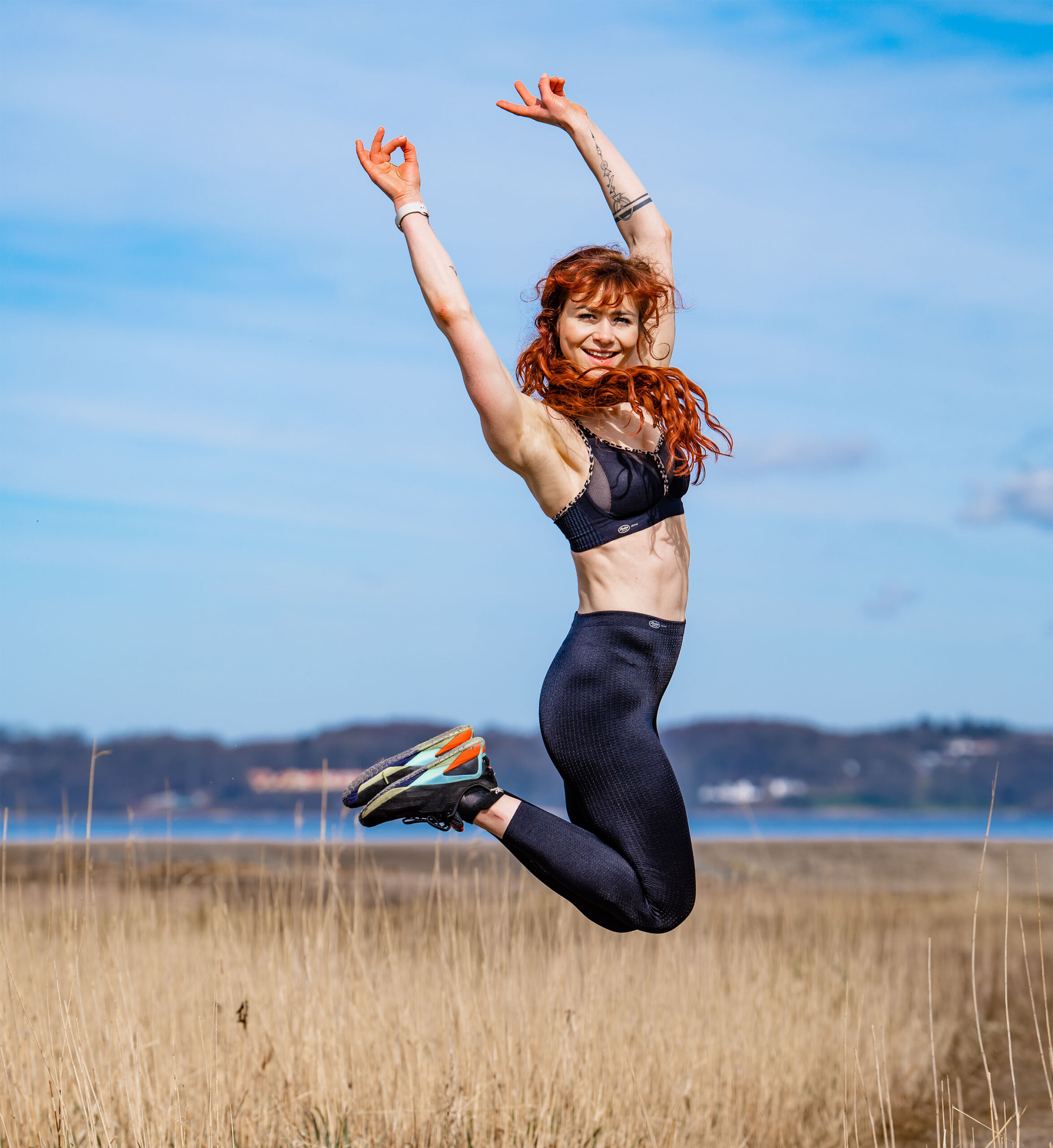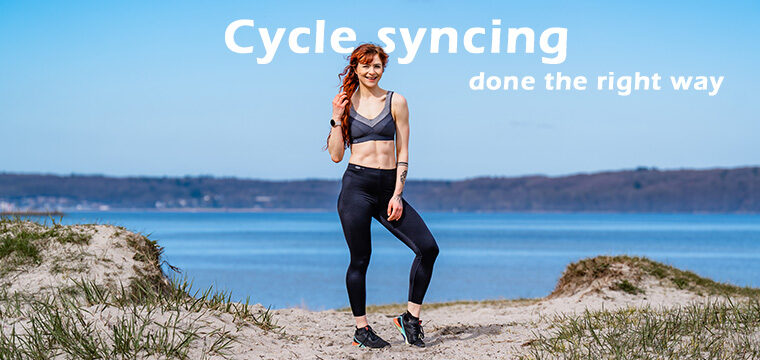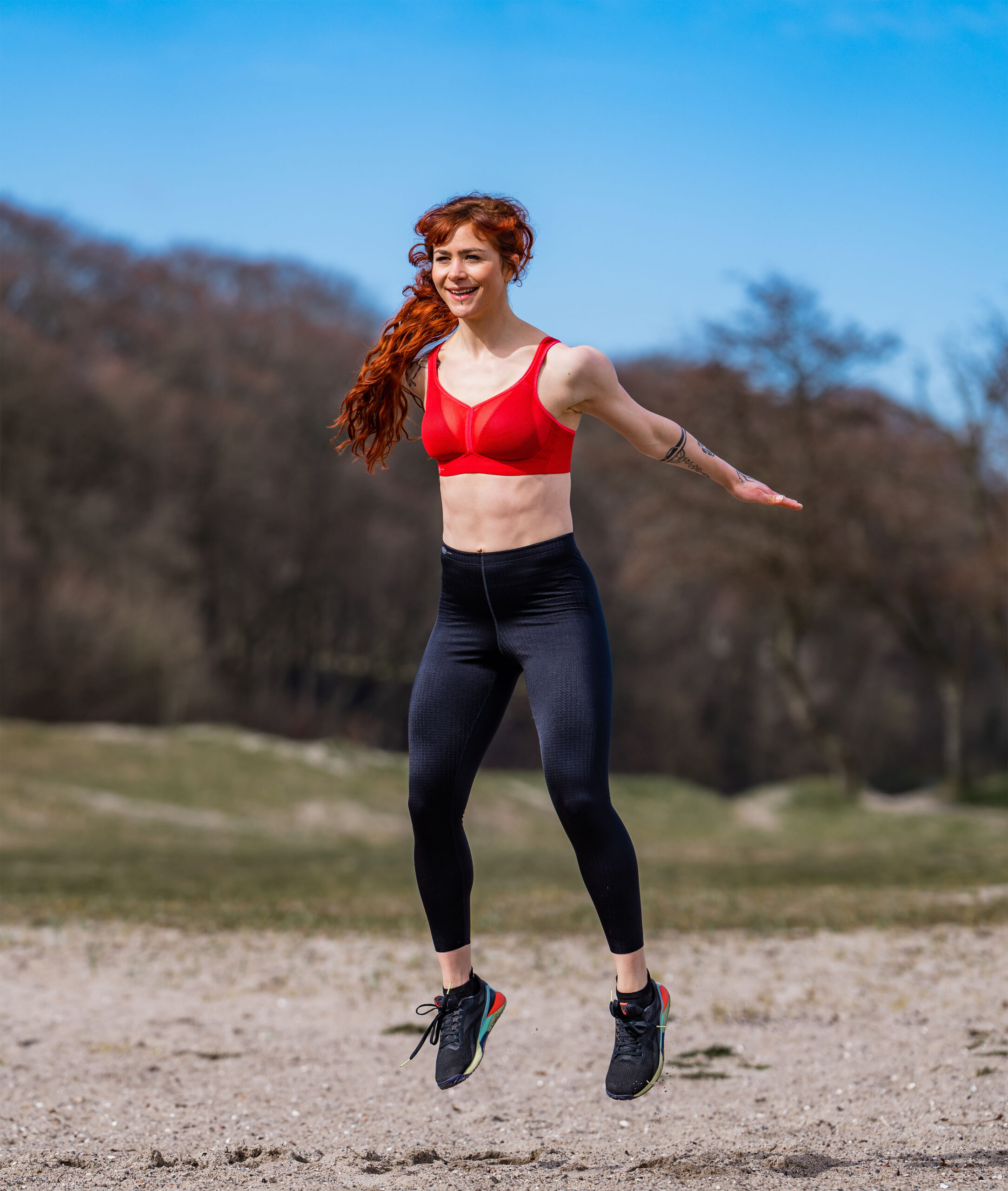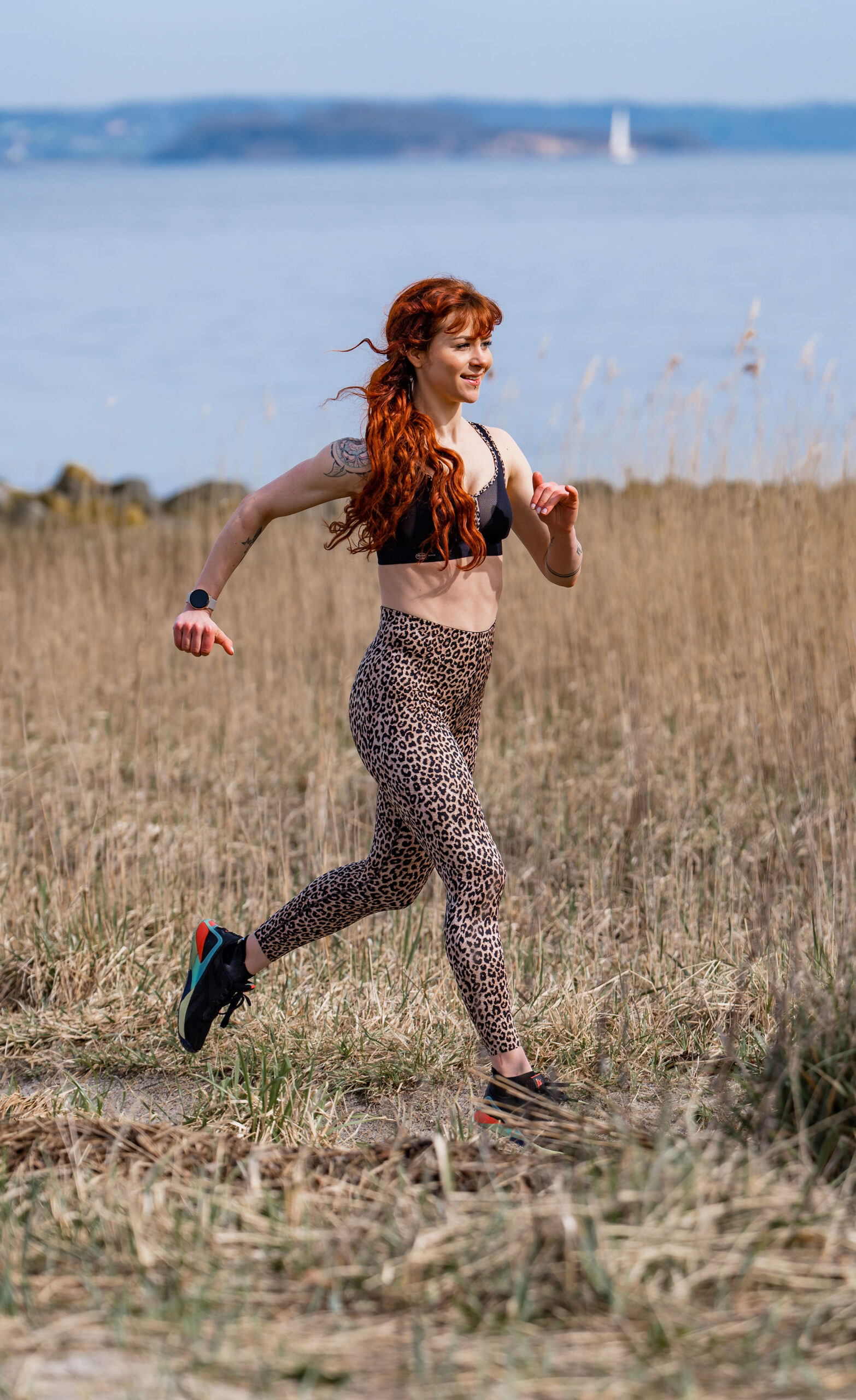Cycle syncing is trending right now. Instagram and TikTok are full of tips and tricks on how to train “correctly” in sync with your female cycle to increase performance. But what is cycle syncing all about? What do you need to watch out for and can you optimise your performance every month? Get the answers and find out more in this article.
Why should you do cycle syncing?
Cycle syncing is all about adapting your training activities to the different phases of your cycle. Recommendations depend on the phase you’re in, for example, a certain time may be best for base endurance training and another time in you cycle, the best moment for building muscle.
At first glance, the idea behind this seems fairly logical. Most women go through various phases in their cycle where hormones fluctuate and influence the body, mood and even their metabolism.
When cycle syncing, wewant to – at least in theory – take these fluctuations into account and get to a place where we are in harmony with our bodies.
While the idea of a cycle syncing training schedule seems logical, it is not currently backed up by science. At this point in time, we cannot make any general recommendations for adapting your training schedule to match the different phases of your cycle or its effects in terms of performance.
This does not mean that the reverse conclusion is true and there are no changes throughout your cycle, or even that the symptoms your are experiencing at different times of the month are all in your head. Absolutely not! Your perceptions are valid and the most important evidence we have when discussing cycle syncing.
Still, what this means for the current cycle syncing trend is that most of the statements circulating on social media are simply untenable.
But does cycle syncing actually work?
Scientific results are currently fairly 50/50 when it comes to the impact of your cycle on your training. A small number of studies show that for some women, their performance is slightly impaired in the luteal phase, i.e. a few days before their periods. This clearly does not apply to all women and was not evident in all studies.
The only safe recommendation at the moment is therefore that
every woman is different and every cycle is incredibly individual. A training schedule based on the menstrual cycle needs careful observation and evaluation of individual symptoms and trends over a longer time frame.
Cycle syncing – the big five for physically active women
An important point, and one that is often neglected in the debate about cycle syncing, is that the basic principles of effective training are the number one concern for women too. This doesn’t mean we are going to be ignoring the menstrual cycle altogether, but that we will be focussing on the basics first when planning and optimising any training schedules.
This includes:
- Calories
- Carbohydrates
- Protein
- Training structure, volume and progression
- Sleep and recovery
Unless you’re getting an adequate amount of calories, are adapting your carbohydrate intake to your physical activity, consuming a minimum of 1.2–2.2 g of protein per kg of body weight and paying attention to sleep, recovery and a sensible training structure, this is not the right time to design your training around your cycle.
For an awful lot of women, optimising the basics is already enough as they are now optimally supported, training sensibly and therefore on top of their symptoms.
If you want more and aim to actually include your cycle in your training schedule, the following tips are for you!
10 tips for cycle syncing
Get to know your cycle
If you want to train according to your menstrual cycle, the best way to start is by getting to know yourself a little better. Keep an eye on your cycle and write down any changes you notice over a few months. The following points may be of interest to you in this regard:
- Energy level
- Mood
- Sleep
- Digestion
- Performance
- RPE (more on that below)
- Motivation
- PMS
- Length of your cycle
- Time of ovulation
Maybe you can already see a pattern of what’s happening in your body.
Training management with RPE
Training with RPE is truly magic.
RPE stands for Rate Of Perceived Exertion. For this purpose, you should rate your perceived effort on a scale from 1–10. The works for both strength and endurance training.
If you want to build muscle, for example, you will train most sets at an RPE of approx. 7–9. You will then have fuel for a further 1–3 repetitions until your muscles start to fail.
Because fluctuations – some days you may be getting less sleep or have less energy – are part of our daily lives (and may be independent of your cycle) this could mean using different weights on different days. With RPE, you can be guided by how you’re feeling on the day to reduce or increase your weights as required.
Eat carbohydrates as part of your training
Make sure you get enough carbohydrates immediately before training, especially in the second half of your cycle (the luteal phase). For longer sessions, it may also be necessary to take more carbohydrates during your actual training period.
Many of the negative impacts of the luteal phase on your performance can be negated this way.
Increase your energy supply during the luteal phase
Our basic energy needs may be slightly increased by 2–12 % during the second half of our menstrual cycle. For some women, this explains the increase in cravings at the end of the cycle as well as the munchies before their period.
If you notice you are hungrier during this phase, slightly increase the portion size of your main meal or have an additional snack.
Wear suitable clothing
Some water retention is perfectly normal just before your period.
The breasts in particular are often affected and can become tender and sore. A suitable sports bra is therefore absolutely essential for intensive sports such a running, horse riding or skipping.
Without a suitable sports bra, training will be painful and uncomfortable and can even damage the sensitive breast tissue over the long term.
Make sure you wear a good sports bra throughout your menstrual cycle and also have a larger size on standby for any water retention if required. The Anita active sports bra offers optimum support and also minimises breast movement at higher intensities. Depending on your sport, you can select a bra for light, medium or high intensity.
Some of my favourite models with good support are:
- Anita active AIR CONTROL DELTAPAD
- Anita active EXTREME CONTROL
- Anita active DYNAMIX Star
- Anita active PANALPTM AIR Wool
To find the best model for your needs, we recommend trying out different versions and sizes. Bust sizes are individual and, depending on our anatomy, preference and sport, we all have different requirements when it comes to our sports bras.
In addition to a suitable sports bra, you can also find extremely comfortable sports tights from Anita active. They gently massage your legs, fit like a second skin and provide a comfortable massage effect during exercise.
Hydration is key
An adequate fluid intake is of vital importance, particularly in hot conditions or during intensive training sessions. Make sure to drink enough water throughout the day, especially in the second half of your cycle and in relation to all areas of your training.
Create a good sleep environment
Sleeping troubles at the end of the cycle are a problem that affects many women.
The right sleeping environment and behaviour are therefore all the more important when addressing this issue. Plan your bedtime incorporating adequate buffers, establish an evening ritual to help you relax, and pay attention to the temperature in your room.
Use supplements if required
If you want more and the mentioned optimisations are not enough, you can also try a few supplements. These include:
- Caffeine just before your training session to increase performance.
- Electrolytes for intensive training or sport in warmer conditions.
- Sour cherry juice to aid sleep
- Fish oils for recovery
- Creatine for general performance and possibly for alleviating water retention during your cycle.
Bear in mind that some supplements still lack solid data. Caffeine and electrolytes are well studied. At this point, the other nutritional supplements are only supported by indicative studies.
Make small adjustments to your training schedule when cycle syncing
Once you have documented your cycle over a longer period, you may be able to discover certain patterns. You can now begin to make minimal adjustments to your training schedule.
This doesn’t mean you have to restrict yourself to just strength training and HIIT during the first half of the cycle and only go for walks and yoga sessions during the second half.
The basic structure of your training should always stay about the same. You can, however, slightly adjust your training volume, incorporate an extra day of rest, or time your recovery week in alignment with your cycle.
Be mindful though to keep these changes to a minimum.
Stay curious and get to know yourself anew the whole time
We are constantly changing. Women are not only all different, but each cycle is unique too. So stay curious and discover yourself anew the whole time. You don’t have to dogmatically focus on your cycle. It’s the icing on the cake, not the flan base.
If you get the basics right and generally look after yourself, you will be able to perform during all phases of your cycle.
If you notice any changes, ask yourself if it’s a pattern or if you have made any adjustments. Always consult your gynaecologist in case of any disturbances in your menstrual cycle or severe symptoms.










